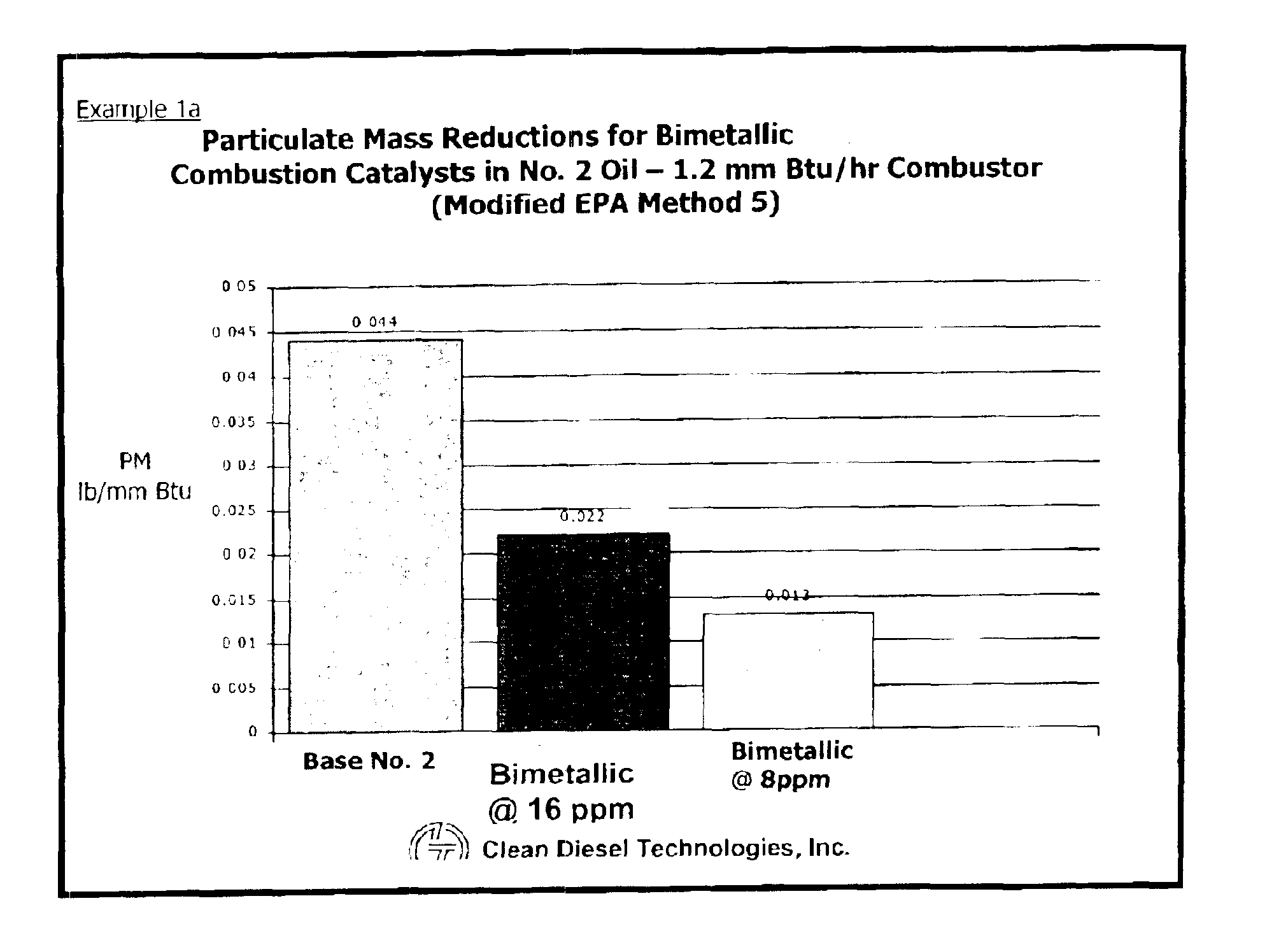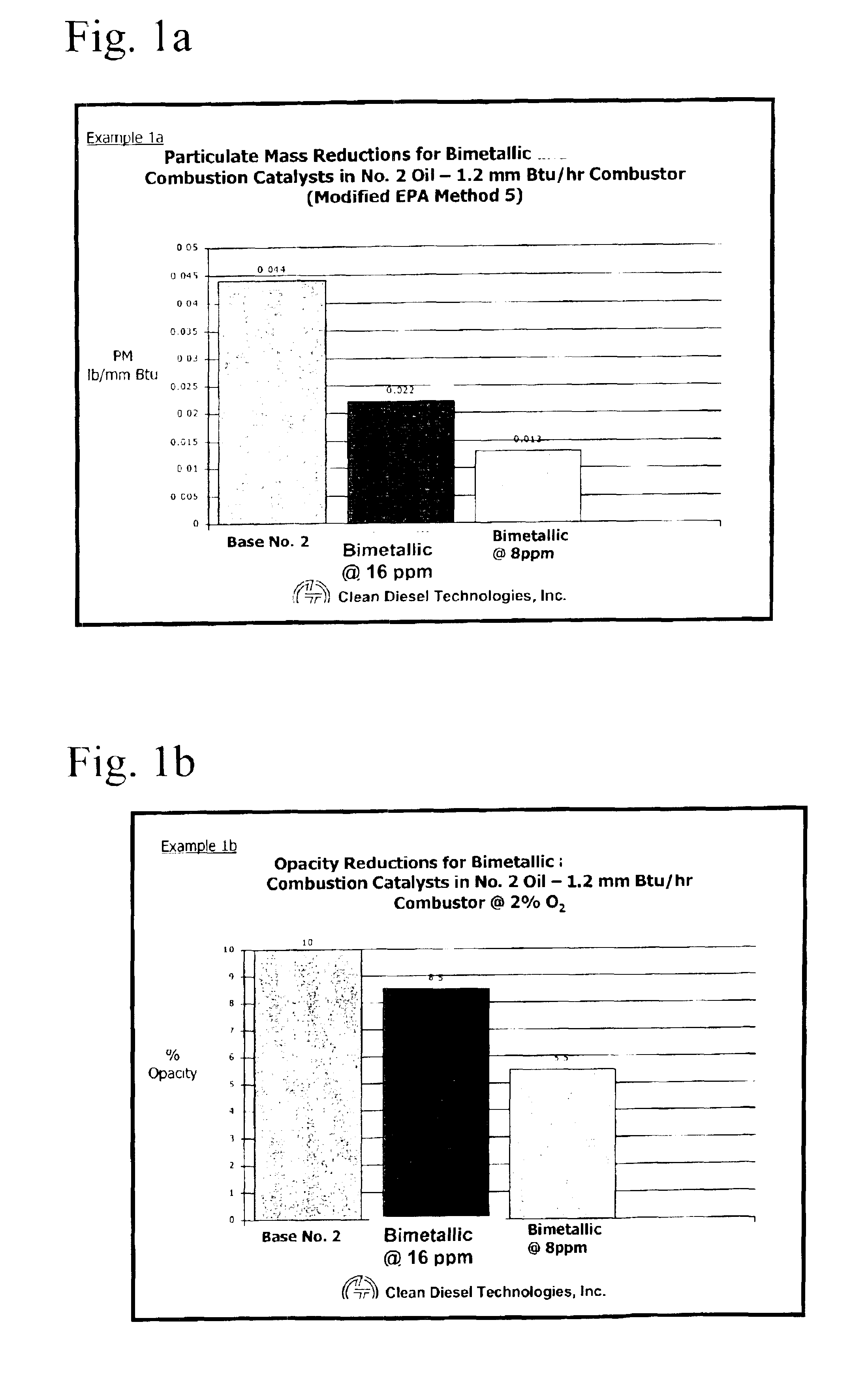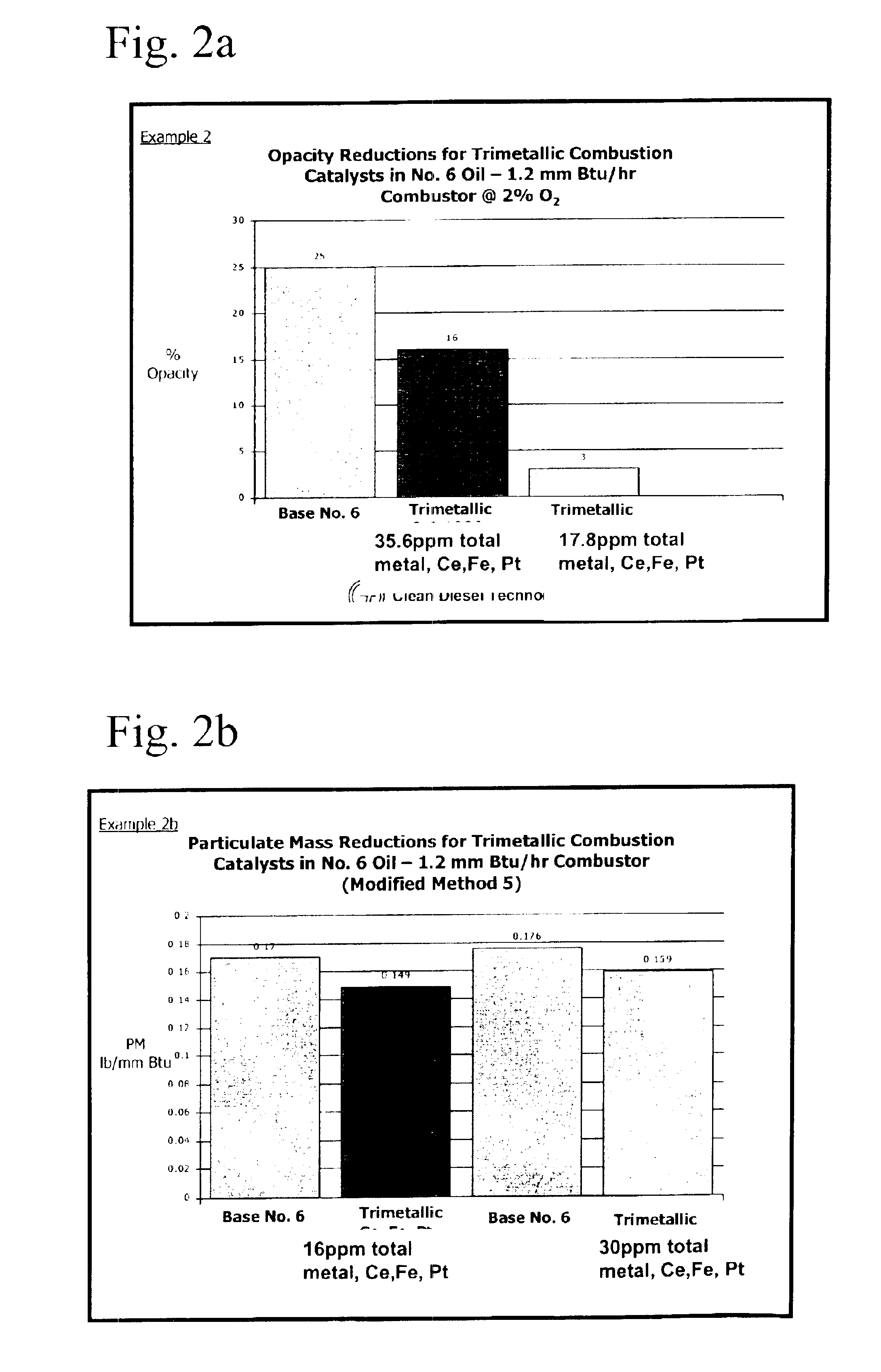Reduced-emissions combustion utilizing multiple-component metallic combustion catalyst
a technology of combustion catalyst and catalyst metal, which is applied in the direction of combustion of catalytic materials, combustion types, lighting and heating apparatus, etc., can solve the problems of difficult combustion fully and cleanly, and achieve the effects of improving combustion efficiency, low catalyst metal additive levels, and high initial dos
- Summary
- Abstract
- Description
- Claims
- Application Information
AI Technical Summary
Benefits of technology
Problems solved by technology
Method used
Image
Examples
example 1
[0039]This example tests the addition of a bimetallic platinum and cerium fuel borne catalyst (FBC) at 16 ppm and 8 ppm, to No. 2 oil and fired in a 1.2 mm Btu / hr test combustor. As shown in FIGS. 1a and 1b, both the bimetallic FBC, used at 8 PPM and 16 ppm total catalyst in fuel, reduced particulate mass emissions by 50-70% (FIG. 1a). Opacity was also reduced by 15-45% (FIG. 1b).
example 2
[0040]This example presents results for two trimetallics containing iron, cerium and platinum catalyst used in No. 6 heavy oil and fired on the same test combustor. The results are summarized in FIG. 2a and FIG. 2b.
example 3
[0041]This example presents results for a platinum and cerium bimetallic FBC used in commercial ultra low sulfur diesel at a total of 4 ppm metal versus normal sulfur fuel and a reference ULSD and tested on a 1998 DDC Series 60 Engine. The results are summarized in the table below:
[0042]
Emissions Results From a 1998 DDC Series 60 Engine on Various Fuels(Replicate Hot FTP Tests)gr / bhp-hrlb / hp-hrHCCONOxPMBSFC1998 Standard1.315.54.00.10NSBase No. 2D0.131.04.00.08.413ULSD + Bimetallic FBC0.160.93.70.06.410@ 0.25 Pt / 3.75 CeReference ULSD0.350.93.90.08.416
[0043]The above table shows improvements for the FBC treated fuel in HC (54%), NOx (5%), PM (25%) and fuel economy (1.4%) for a treated ultra low sulfur diesel (ULSD) fuel against a reference ULSD without the additive.
PUM
 Login to View More
Login to View More Abstract
Description
Claims
Application Information
 Login to View More
Login to View More - R&D
- Intellectual Property
- Life Sciences
- Materials
- Tech Scout
- Unparalleled Data Quality
- Higher Quality Content
- 60% Fewer Hallucinations
Browse by: Latest US Patents, China's latest patents, Technical Efficacy Thesaurus, Application Domain, Technology Topic, Popular Technical Reports.
© 2025 PatSnap. All rights reserved.Legal|Privacy policy|Modern Slavery Act Transparency Statement|Sitemap|About US| Contact US: help@patsnap.com



